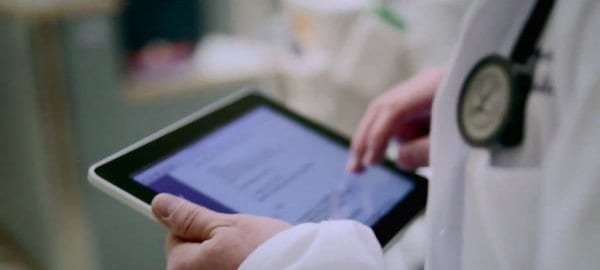BYOD and Healthcare Organizations: It Doesn’t Have to Put IT in Critical Condition

 As with other industries, healthcare organizations are taking it slow in regards the BYOD trend. There is no denying that a BYOD program opens up serious security concerns when considering the type of information stored in a healthcare organization’s network. In a recent Healthcare Technology Online article Bob Nilsson, Director of Healthcare Solutions Marketing for Enterasys, says that this slow pace of BYOD adoption goes beyond just security concerns. “With EHR Meaningful Use, ICD-10, and other high-level technology initiatives, health IT resources are limited. Establishing an airtight BYOD policy isn’t necessarily the highest priority to IT executives. Also, since improperly engaging in BYOD could potentially result in data breach or network collapse, many healthcare facilities opt not to engage in BYOD activity.”
As with other industries, healthcare organizations are taking it slow in regards the BYOD trend. There is no denying that a BYOD program opens up serious security concerns when considering the type of information stored in a healthcare organization’s network. In a recent Healthcare Technology Online article Bob Nilsson, Director of Healthcare Solutions Marketing for Enterasys, says that this slow pace of BYOD adoption goes beyond just security concerns. “With EHR Meaningful Use, ICD-10, and other high-level technology initiatives, health IT resources are limited. Establishing an airtight BYOD policy isn’t necessarily the highest priority to IT executives. Also, since improperly engaging in BYOD could potentially result in data breach or network collapse, many healthcare facilities opt not to engage in BYOD activity.”
The article goes on to highlight a few tips and Mobile Device Management (MDM) strategies that can break the perception that, “BYOD is a risky, complex, and costly undertaking.” The article quotes Rob Shaughnessy, CTO of Circadence, who provides three areas of focus for healthcare organizations to focus on in order for a BYOD program to become manageable. He touches on Security, saying that there needs to be a large focus on encryption capabilities and that data should actually not be stored on the end devices themselves, pointing towards virtualization technologies. Access Control with a large focus on certifications and authentication protocols allowing for visibility into the identity of a user and to ensure they are authorized to access the systems. Finally he suggests Data Delivery as a focus in order to ensure that proper bandwidth is allocated to proper individuals as needed.
The article also offers a few proof of concept example of healthcare organizations that have successful implemented BYOD programs through the use of MDM solutions and strategies. Read the entire article here for more insight into how healthcare organizations can utilize MDM solution in order to secure and manage a BYOD program.



















